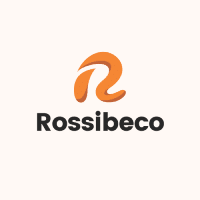How Can UK Startups Effectively Use Crowdsourcing for Product Development?

Crowdsourcing has become a significant player in the world of business. It’s a unique tool that allows businesses, specifically startups, to leverage the power of the crowd. It’s about sourcing ideas, content, or even funding from a large group of people, primarily online communities. For startups in the UK, this can be a game-changing strategy in product development, a new-age solution to traditional problems.
Understanding Crowdsourcing and its Relevance to Startups
Crowdsourcing is a popular concept that involves obtaining services, content, or ideas by soliciting contributions from a large group of people, especially from an online community, rather than traditional employees or suppliers. The idea is based on the principle that collective intelligence will always supersede individual cognition.
Topic to read : How to Increase Patient Engagement with Digital Health Tools in the UK?
This principle is particularly relevant to startups, who might have limited resources and less exposure. Through crowdsourcing, startups can gather massive amounts of data, a plethora of design ideas, or even raise funds for product development. It’s a way to involve the crowd in the company’s journey, creating a sense of community and stake in the product’s success.
Utilizing Crowdsourcing for Product Design and Innovation
Crowdsourcing can play a pivotal role in product design and innovation. It enables you to tap into a global pool of talent and creativity, without the overhead costs associated with hiring full-time employees or contractors.
Topic to read : What Are the Key Factors for Designing an Effective Mobile Wallet App for the UK Market?
Numerous platforms like Kickstarter, Indiegogo, and Crowdfunder offer a space where you can pitch your idea or project to the crowd. You can solicit design ideas from people around the world, providing a much wider range of creativity than would be possible within a single company.
By opening up the design process to the crowd, your business can benefit from diverse perspectives and innovative ideas that you may not have considered otherwise. Even better, these platforms often have features that allow you to gauge crowd reactions to different ideas, giving you insight into what will resonate best with your target market.
Crowdsourcing: A New Approach to Market Research
Another benefit of crowdsourcing is the ability to conduct market research. By engaging with the crowd, startups can gather valuable data about the market and customer preferences. This data can help inform product development, ensuring that the final product meets customer needs and wants.
In traditional market research, companies often rely on surveys or focus groups which can be time-consuming and expensive. Through crowdsourcing, startups can use platforms like SurveyMonkey or Google Forms to gather data quickly and more affordably.
Moreover, by engaging the crowd in product development, you’re creating a pool of potential customers who feel invested in your product because they’ve contributed to its creation. This can help build brand loyalty, making your marketing efforts more effective in the long run.
Crowdfunding: Crowdsourcing Financial Resources
Crowdfunding is a form of crowdsourcing that specifically focuses on raising financial resources. It’s a way for businesses, particularly startups, to raise capital for their projects by asking a large number of people to donate or invest a small amount.
Platforms like Kickstarter, Indiegogo, GoFundMe, and Patreon are popular crowdfunding platforms where you can raise funds for your project. These platforms not only help you raise money but also create a buzz around your product. They allow you to share your project story, making it more personal and engaging for potential backers.
By crowdfunding your project, you’re not just obtaining funds. You’re also validating your idea in the market. If people are willing to invest in your product before it’s even created, it’s a strong signal that there’s a demand for what you’re offering.
Harnessing the Power of the Crowd for Business Growth
While crowdsourcing offers a wealth of opportunities, it’s essential to remember that this strategy requires careful planning. You need a clear plan on how to engage with the crowd, how to manage the data or ideas you receive, and how to implement them into your product development process.
Moreover, it’s essential to remember that the crowd you’re engaging with will vary greatly in their expertise and understanding of your product or industry. Therefore, it’s crucial to manage expectations and ensure that communication is clear and concise.
Despite these challenges, crowdsourcing presents a unique opportunity for UK startups. By effectively leveraging the crowd, you can bring innovative products to the market more rapidly and efficiently. You can validate your ideas, raise funds, and even build a community around your brand. It’s a strategy that brings the power of many to help your startup navigate the path of growth and success.
Leveraging Social Media for Crowdsourcing
Social media can be a powerful tool for startups to engage in crowdsourcing activities. Platforms such as Facebook, Instagram, Twitter, LinkedIn, and even YouTube provide a direct connection to a diverse, global audience. They enable businesses to reach out to a large number of people and solicit their input, feedback, and contributions.
Startups can use social media to ask for ideas, gather opinions, or even conduct informal surveys. Facebook, for example, offers tools for creating polls, which can be useful for gauging public opinion on a new product feature or design. Instagram, on the other hand, is a great platform for visual content, making it ideal for sharing product designs and collecting feedback.
Social media also provides an excellent platform to promote crowdsourcing initiatives and engage with potential contributors. Startups can create a buzz around their product development efforts, build awareness, and encourage participation through various social media strategies.
An excellent example of a crowdsourcing platform that utilises social media is Amazon Mechanical Turk. This platform enables businesses to crowdsource their microtasks to a large group of people across the globe. The platform operates within Amazon’s larger ecosystem, making use of its extensive user base and social media presence to reach potential contributors effectively.
However, using social media for crowdsourcing requires careful planning and effective communication. It’s crucial to clearly state what you’re looking for, provide necessary information, and manage expectations in a concise and easily understandable way. Remember to maintain a positive and respectful tone in all interactions and respond to feedback and contributions in a timely and appreciative manner.
Optimising Crowdsourcing Efforts through Business Model Innovations
Innovation in business models can greatly enhance the effectiveness of crowdsourcing efforts. Startups can optimise their approach by incorporating crowdsourcing elements into their business strategy and structure.
One way of doing this is by building a community around your brand or product. A strong, engaged community can act as a catalyst for crowdsourcing projects. They feel invested in the product’s success and are more likely to contribute ideas, feedback, or even funds.
Crowdfunding campaigns, for instance, are more successful when they’re backed by a strong community. Platforms like Kickstarter and Indiegogo allow for community building, where startups can engage with potential backers, share updates, and create a sense of collective ownership.
Another approach is to incorporate crowdsourcing into product design and development. Inviting input and feedback from the crowd can lead to diverse and innovative designs. Clive Reffell, a notable figure in the crowdsourcing industry, emphasises the importance of effective communication and engagement for successful crowdsourcing.
A good example of this integrated approach is the fashion startup Catalyst Activewear. They used crowdsourcing to engage their audience in the design process, asking for input on everything from colours to fabric choices.
It’s important to keep in mind privacy policy issues when engaging in crowdsourcing. Make sure to have a clear policy in place and communicate it effectively to your audience. Transparency and respect for contributors’ privacy can greatly enhance trust and participation in your crowdsourcing initiatives.
Conclusion: Crowdsourcing – A Powerful Tool for UK Startups
Crowdsourcing is a transformative strategy that UK startups can use to leverage the power of the crowd in product development. By effectively utilising crowdsourcing platforms, social media, and innovative business models, startups can engage a large group of people, fostering creativity, innovation, and community engagement.
Whether it’s for product design, market research, or raising funds, crowdsourcing allows startups to tap into collective intelligence and resources. It helps them bring diverse perspectives and innovative ideas to the table, validate their offerings in the market, and even build a loyal customer base.
However, it’s essential to remember that successful crowdsourcing requires careful planning and management. Clear communication, respect for privacy, and a well-thought-out strategy are key to harnessing the power of the crowd effectively.
UK startups can greatly benefit from the power of the crowd, making crowdsourcing a promising strategy for business growth and success. As Clive Reffell rightly put it, "Crowdsourcing is not just about doing old things in new ways; it’s about doing new things that couldn’t be done before."
